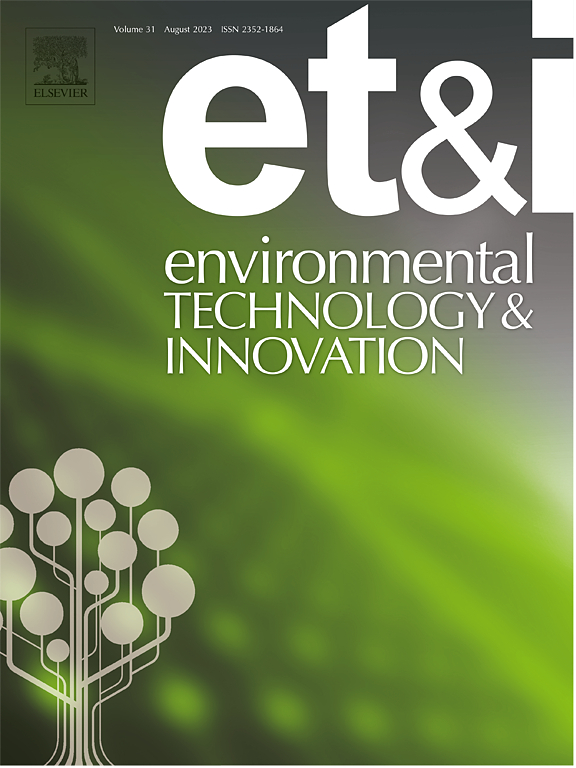中国创新生态系统空间关联网络演化与配置机制
IF 6.7
2区 环境科学与生态学
Q1 BIOTECHNOLOGY & APPLIED MICROBIOLOGY
引用次数: 0
摘要
厘清创新生态系统的空间关联网络,对于促进区域经济协调发展和社会繁荣具有重要意义。基于2017 - 2022年中国31个省区的数据,采用基于博弈论的组合加权、修正引力模型、社会网络分析、模糊集定性比较分析等方法,揭示中国创新生态系统的结构特征、演化过程和配置机制。主要研究结果包括:①时间演化:中国创新生态系统的发展水平显著提高,空间关联网络内部的联系随着时间的推移逐渐显现并加强。江苏被确定为最具影响力的省份。②空间相关性:江苏、山东、浙江等东部沿海省份的空间相关性最强。而黑龙江、宁夏、海南等偏远省份仍处于外围,呈现“东强西弱”的趋势。(3)区域集群:区域划分为双向溢出集群,一个以东部和中部省份为主,另一个以华北省份为主。这些集群显示出密切的内部交流活动。(4)影响因素:地理邻近性、创新成果差异和企业活力显著影响空间关联网络的形成。(5)发展路径:创新生态系统的发展路径可分为综合驱动型“企业创新活力-创新成果-国际资源”和人才驱动型“企业创新活力-高等教育”。本研究对中国创新生态系统的结构、演化及其影响因素具有重要的参考价值,为提升区域创新能力、促进经济均衡发展提供参考。本文章由计算机程序翻译,如有差异,请以英文原文为准。
The evolution and configuration mechanism of spatial correlation network in China's innovation ecosystem
Clarifying the spatial correlation network of the innovation ecosystem is essential for promoting balanced regional economic development and social prosperity. Based on data from 31 Chinese provinces between 2017 and 2022, this study employs methods such as game-theory-based combined weighting, the modified gravitational model, social network analysis, and fuzzy set qualitative comparative analysis to reveal the structural characteristics, evolutionary process, and configurational mechanism of China's innovation ecosystem. Key findings include: (1)Temporal Evolution: The development level of China's innovation ecosystem has significantly improved, with connections within the spatial correlation network emerging and strengthening over time. Jiangsu is identified as the most influential province. (2)Spatial Correlation: Eastern coastal provinces like Jiangsu, Shandong, and Zhejiang exhibit the strongest spatial correlations. In contrast, remote provinces such as Heilongjiang, Ningxia, and Hainan remain at the periphery, resulting in an "east strong, west weak" trend. (3)Regional Clusters: The regions are divided into two-way spillover clusters: one mainly composed of eastern and central provinces, and another consisting of North China provinces. These clusters show close internal exchange activities. (4)Influencing Factors: Geographical proximity, differences in innovation achievements, and enterprise vitality significantly impact the formation of the spatial correlation network. (5)Development Paths: The development paths of the innovation ecosystem can be categorized into a comprehensive-driven type "enterprise innovation vitality - innovation achievements - international resources" and a talent-driven type "enterprise innovation vitality - higher education". This study provides valuable insights into the structure, evolution, and influencing factors of China's innovation ecosystem, offering references for enhancing regional innovation capabilities and promoting balanced economic development.
求助全文
通过发布文献求助,成功后即可免费获取论文全文。
去求助
来源期刊

Environmental Technology & Innovation
Environmental Science-General Environmental Science
CiteScore
14.00
自引率
4.20%
发文量
435
审稿时长
74 days
期刊介绍:
Environmental Technology & Innovation adopts a challenge-oriented approach to solutions by integrating natural sciences to promote a sustainable future. The journal aims to foster the creation and development of innovative products, technologies, and ideas that enhance the environment, with impacts across soil, air, water, and food in rural and urban areas.
As a platform for disseminating scientific evidence for environmental protection and sustainable development, the journal emphasizes fundamental science, methodologies, tools, techniques, and policy considerations. It emphasizes the importance of science and technology in environmental benefits, including smarter, cleaner technologies for environmental protection, more efficient resource processing methods, and the evidence supporting their effectiveness.
 求助内容:
求助内容: 应助结果提醒方式:
应助结果提醒方式:


